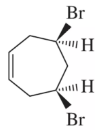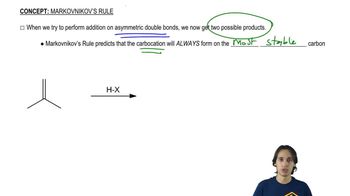Which of the following has an asymmetric center?
CHBr2Cl, BHFCl, CH3CHCl2, CHFBrCl, BeHCl

 Verified step by step guidance
Verified step by step guidance Verified video answer for a similar problem:
Verified video answer for a similar problem:



 2:15m
2:15mMaster What is a stereocenter? with a bite sized video explanation from Johnny
Start learning